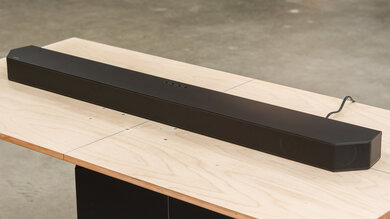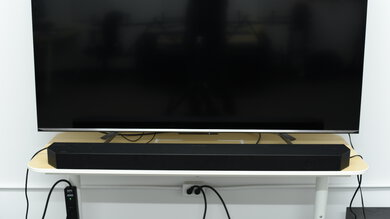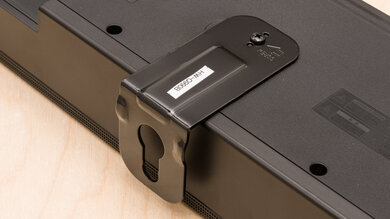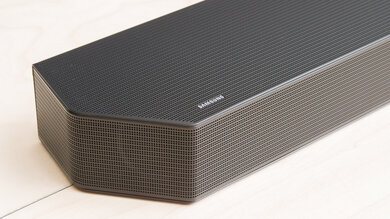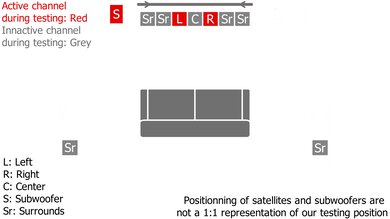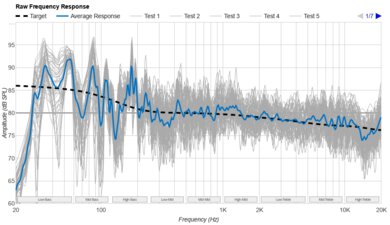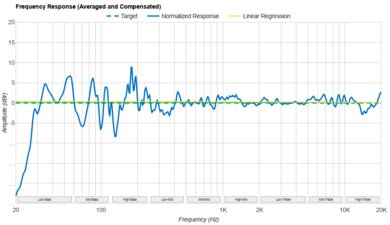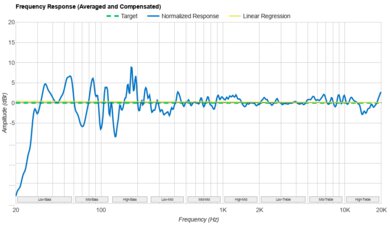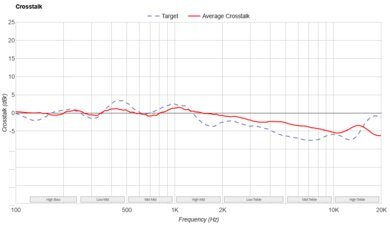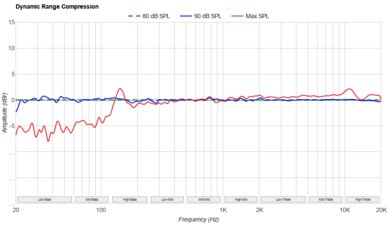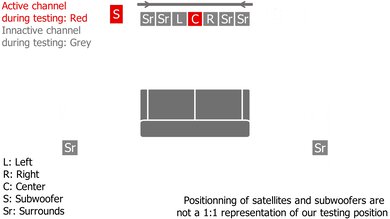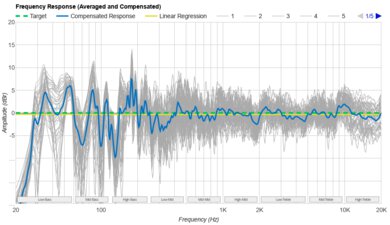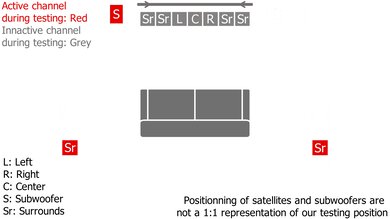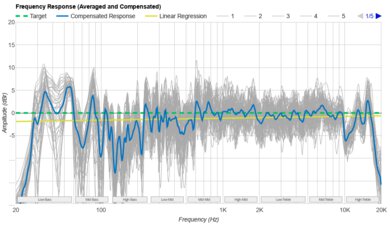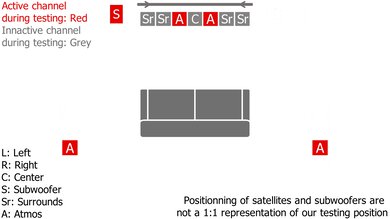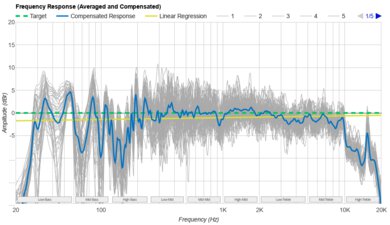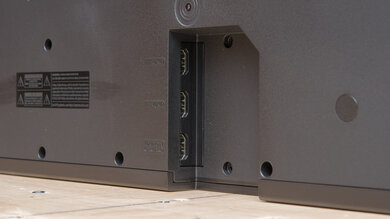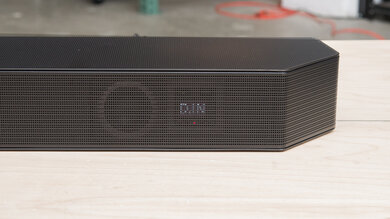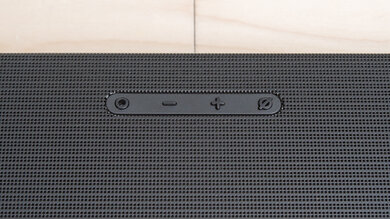The Sonos Arc is the manufacturer's flagship soundbar released in 2020. It's a smart soundbar with built-in voice assistant capabilities designed for easy integration into your living room. Support for multi-channel audio formats like Dolby Atmos and Dolby Digital brings a real and life-like feel to your favorite movies and shows. Connect this soundbar to other Sonos products to spread audio throughout your home or to build out the Sonos Ultimate Immersive Set with Arc for improved performance.
Our Verdict
The Sonos Arc is decent for mixed usage. It's a premium standalone bar suitable for everything from music to movies to TV shows. Right out of the box, dialogue is clear and accurate, and instruments are reproduced with fidelity. It also supports many different audio formats, including Dolby Digital and Dolby Atmos. You can always add on a sub and satellites to improve its performance down the line.
- Sleek and very well-built design.
- Supports Atmos.
- Great stereo soundstage.
- No Bluetooth support.
- No full EQ.
- No Full HDMI In.
The Sonos Arc soundbar is good for dialogue-centric TV shows and podcasts. Its discrete center channel is designed to improve vocal reproduction, and dialogue is clearly and accurately reproduced. If you want, you can even use the dialogue enhancement tool to make voices more crisp. There's no Bluetooth compatibility, but you can stream audio to the bar wirelessly over Wi-Fi or Apple AirPlay 2.
- Sleek and very well-built design.
- Low audio latency.
- Room correction feature available on iOS.
- No Bluetooth support.
The Sonos Arc is good for music. Like most premium setups on the market, it offers a room correction feature to optimize the output based on your room's unique acoustics. Voices and lead instruments are reproduced with clarity and accuracy from the jump, making it suitable for listening to lots of different genres. Plus, you can adjust its bass and treble to make it sound how you wish. As a standalone bar, you don't get much rumble in the low-bass, so you'll have to add a separate sub if you're a real bass lover.
- Sleek and very well-built design.
- Great stereo soundstage.
- Room correction feature available on iOS.
- No full EQ.
The Sonos Arc is satisfactory for movies and performs quite well for a standalone bar. Sound stretches past the bar's edges, giving you a wide and immersive surround sound experience. Dialogue is clear, and sound effects stretch into the space around you. However, without a dedicated sub, you don't get as much rumble in action-packed scenes, and the lack of satellites reduces the overall cinematic feel.
- Supports Atmos.
- Low audio latency.
- Great stereo soundstage.
- No full EQ.
- No Full HDMI In.
Changelog
-
Updated Nov 28, 2024:
We've updated the Stereo Dynamics box to add a comparison with the Sonos Arc Ultra.
- Updated Jul 26, 2024: We've added a comparison between this soundbar and the Samsung HW-Q800D in Sound Enhancement Features.
- Updated Jun 13, 2024: We've added a comparison between this soundbar and the LG SG10TY in Wireless Playback.
- Updated May 03, 2024: Updated Stereo Dynamics results with new methodology from TBU 1.3. Added text to Audio Latency: ARC, and Audio Latency: Optical boxes.
Check Price
Differences Between Sizes And Variants
This soundbar is available in both white and black. We tested the Black variant and expect the White variant to perform similarly.
You can also check out our reviews for the Sonos Arc with Sub + One SL Speakers or the Sonos Ultimate Immersive Set with Arc if you're curious about how the bar performs with a subwoofer and satellites added on.
Sonos has also released a Costco-exclusive version of this soundbar called the Sonos Arc SL. We expect it to perform the same, but it doesn't have a built-in microphone. If you come across another variant of this soundbar, please let us know in the forums, and we'll update our review.
Popular Soundbar Comparisons
The Sonos Arc is a very differently designed soundbar when compared to the Sonos Playbar or the Sonos Beam. It's much bigger and has new features like Atmos support, which isn't available on the other models. You can upgrade this setup by purchasing a wireless subwoofer and satellites, transforming it into a full Sonos Arc with Sub + One SL Speakers or the Sonos Ultimate Immersive Set with Arc, depending on the satellite speakers you buy.
For more options, check out our recommendations for the best soundbars, the best Dolby Atmos soundbars, and the best soundbars for movies.
The Sonos Arc Ultra is a step up from the Sonos Arc, both in terms of features and performance. The new acoustic architecture results in an improved frequency response, with a better bass extension and articulation. The dynamics performance has also been improved: the newer version compresses even less at max volume. While both soundbars integrate well into existing Sonos ecosystems, pairing with popular speakers like the Sonos Era 300, the Arc Ultra features Bluetooth integration, which will be a bonus for most users. The older variant comes with an optical to HDMI adaptor as standard, which will suit users with older TVs. That said, you can still purchase this separately.
The Sonos Arc is more versatile than the Sonos Beam since it supports eARC and Atmos content. The Arc can deliver deeper bass and has better surround and height performances. That said, the Beam performs better at max volume. It's also shorter and much easier to fit between the legs of a 55-inch TV.
The Sonos Arc is better for mixed usage than the Sonos Beam (Gen 2). The Arc is a 5.0.2 setup with a better Atmos performance. It also gets louder, albeit with more compression at max volume. However, the Beam is more compact and better built. You can also upgrade both setups with a subwoofer and satellites.
The Sonos Arc is a bit more versatile than the Sonos Playbar. The Arc has HDMI ports and also supports Atmos and eARC, unlike the Playbar. Both sound fairly bright, and the Playbar performs better at max volume than the Arc.
Test Results



